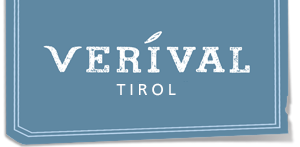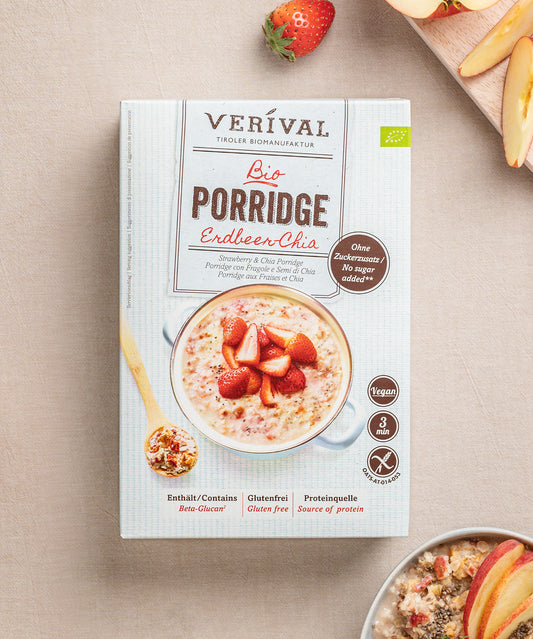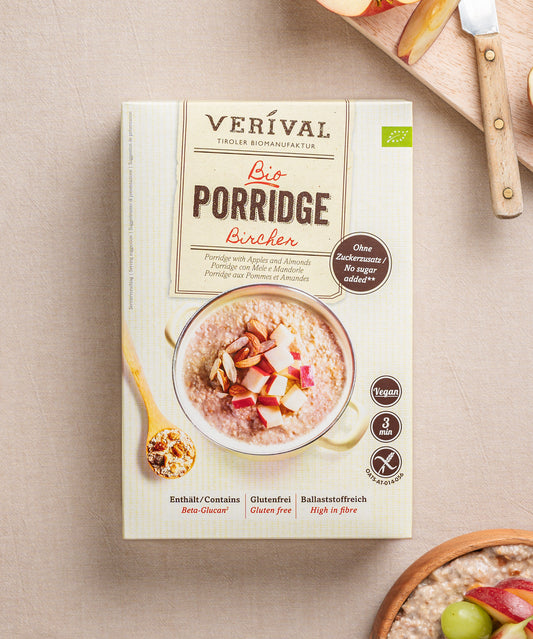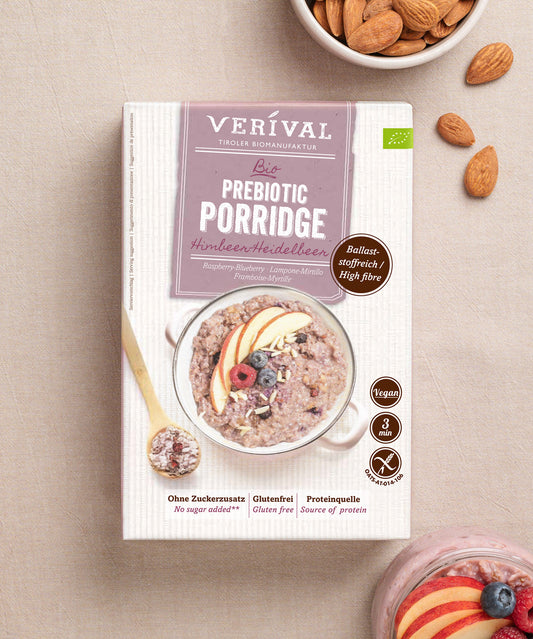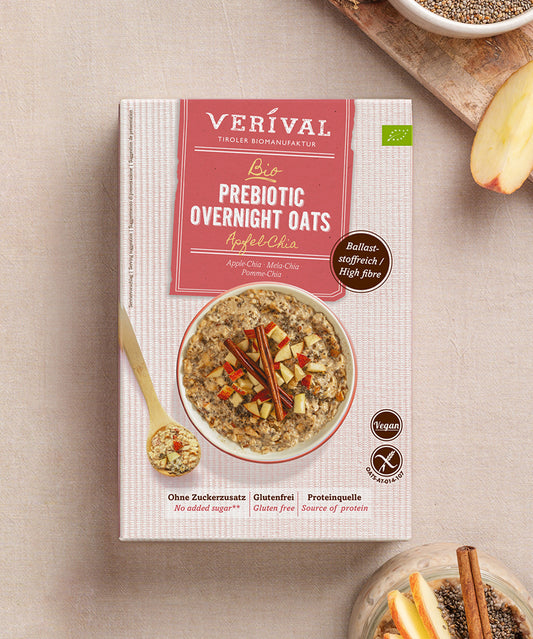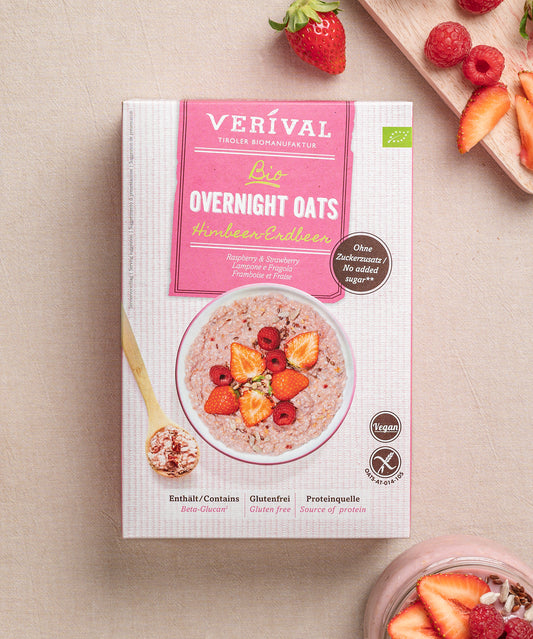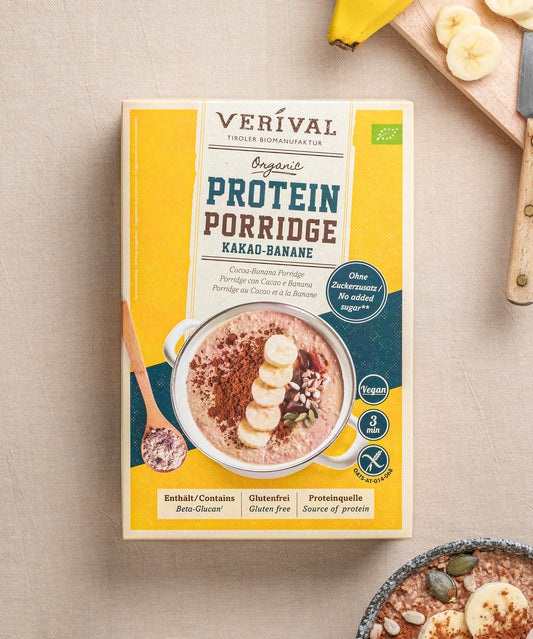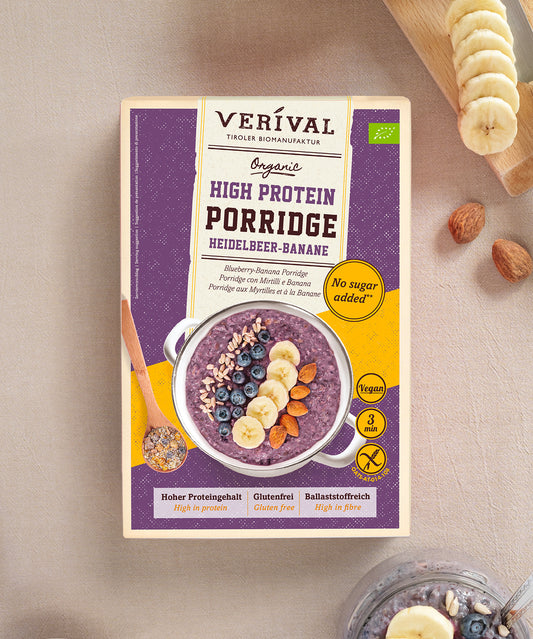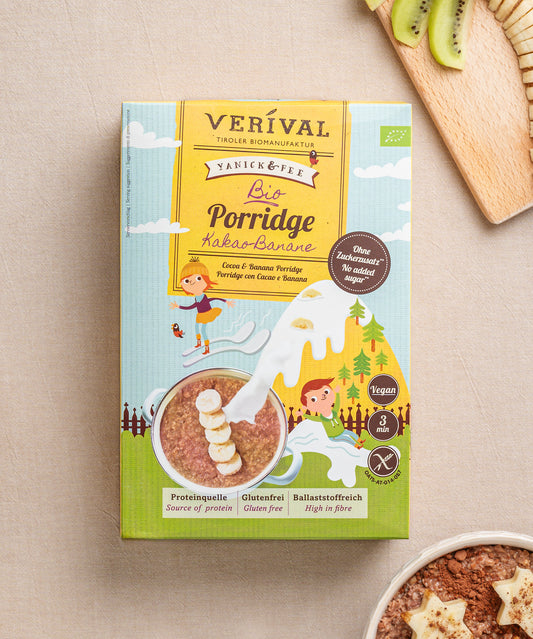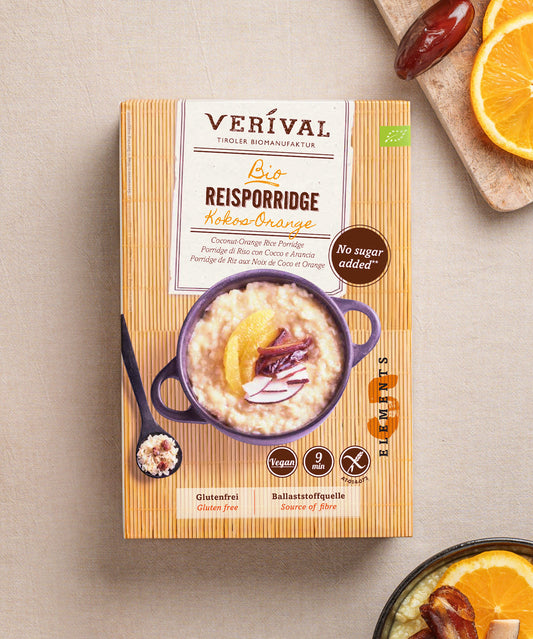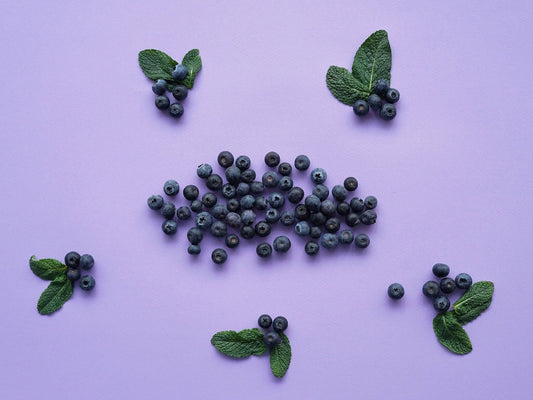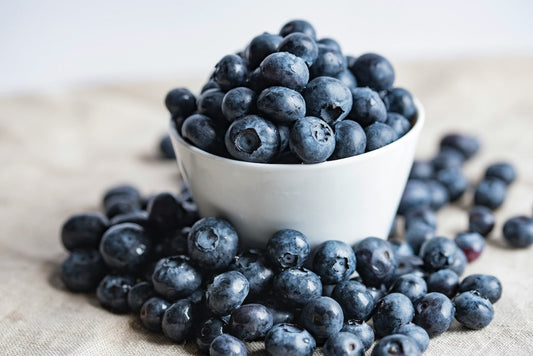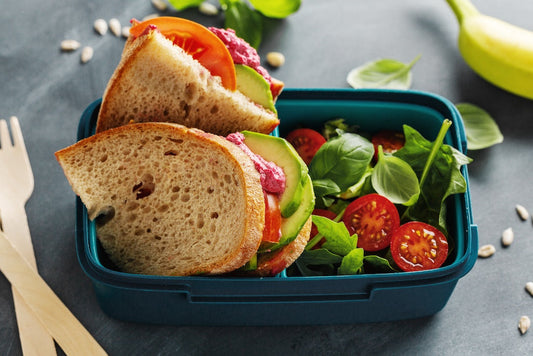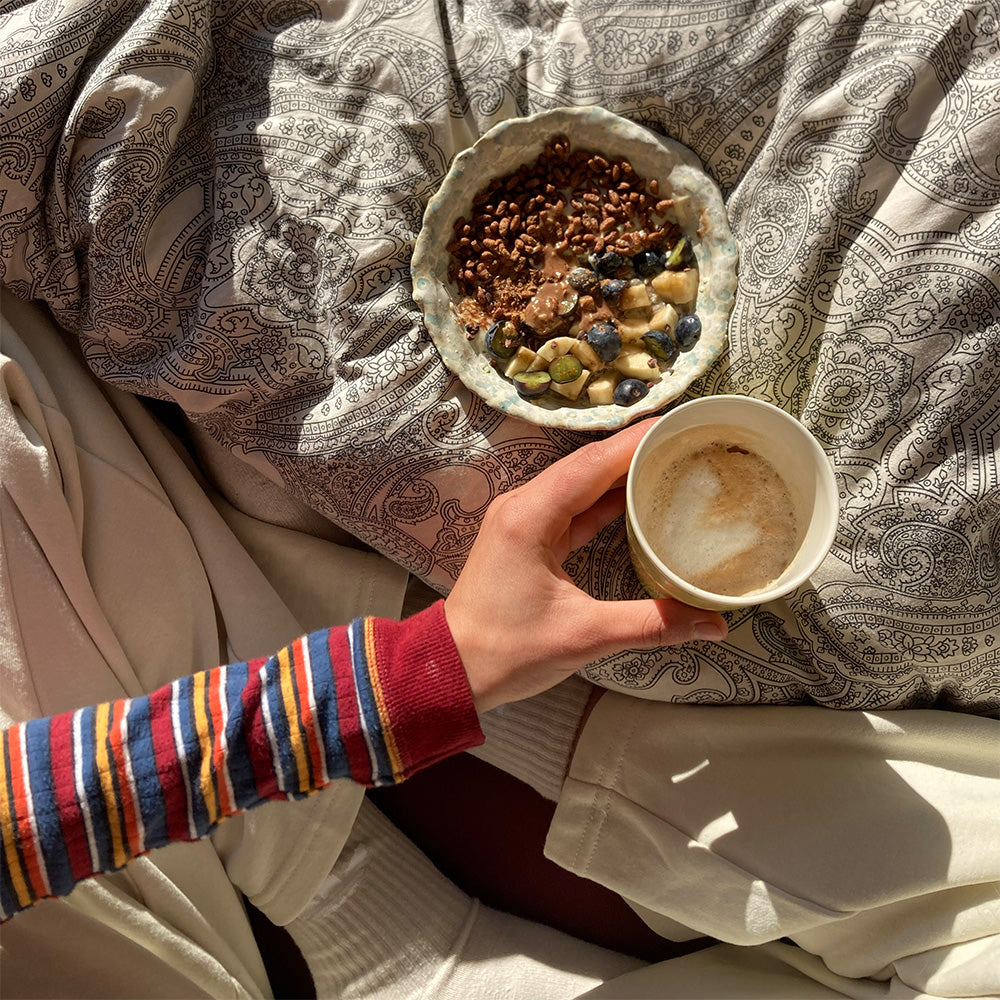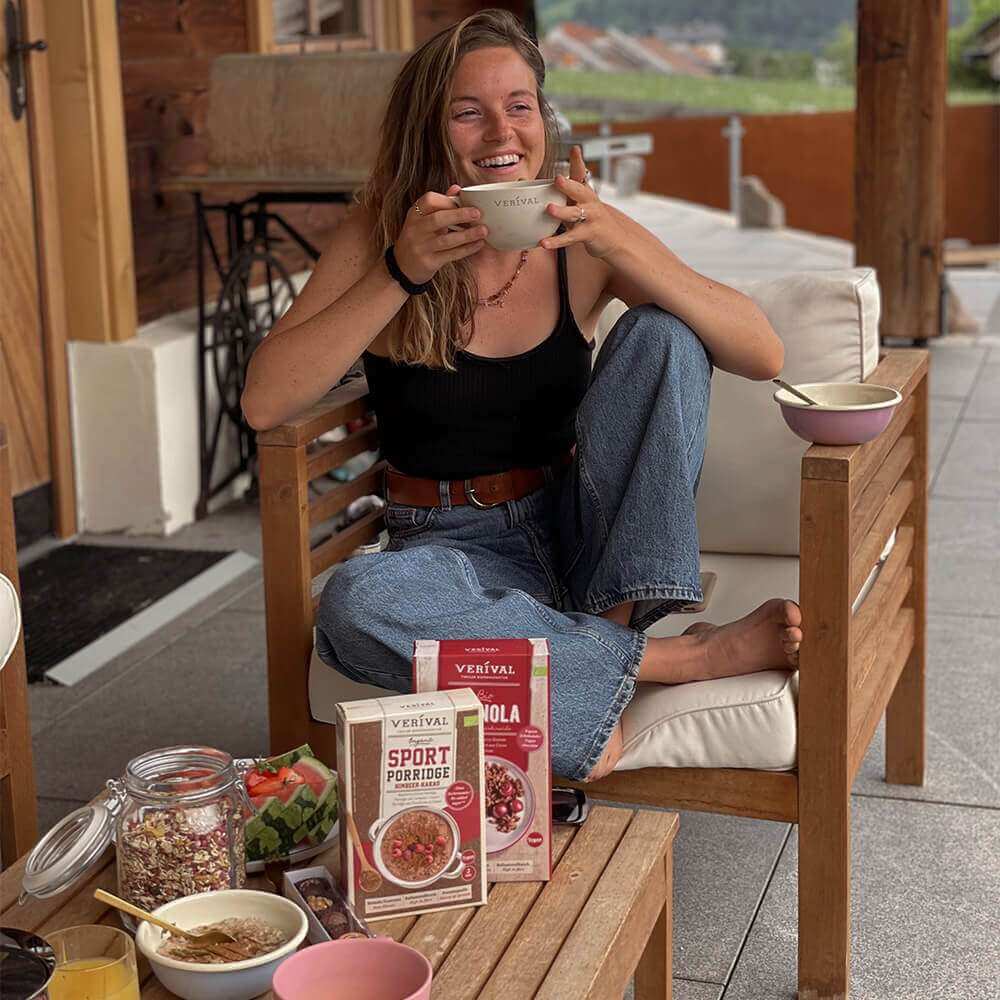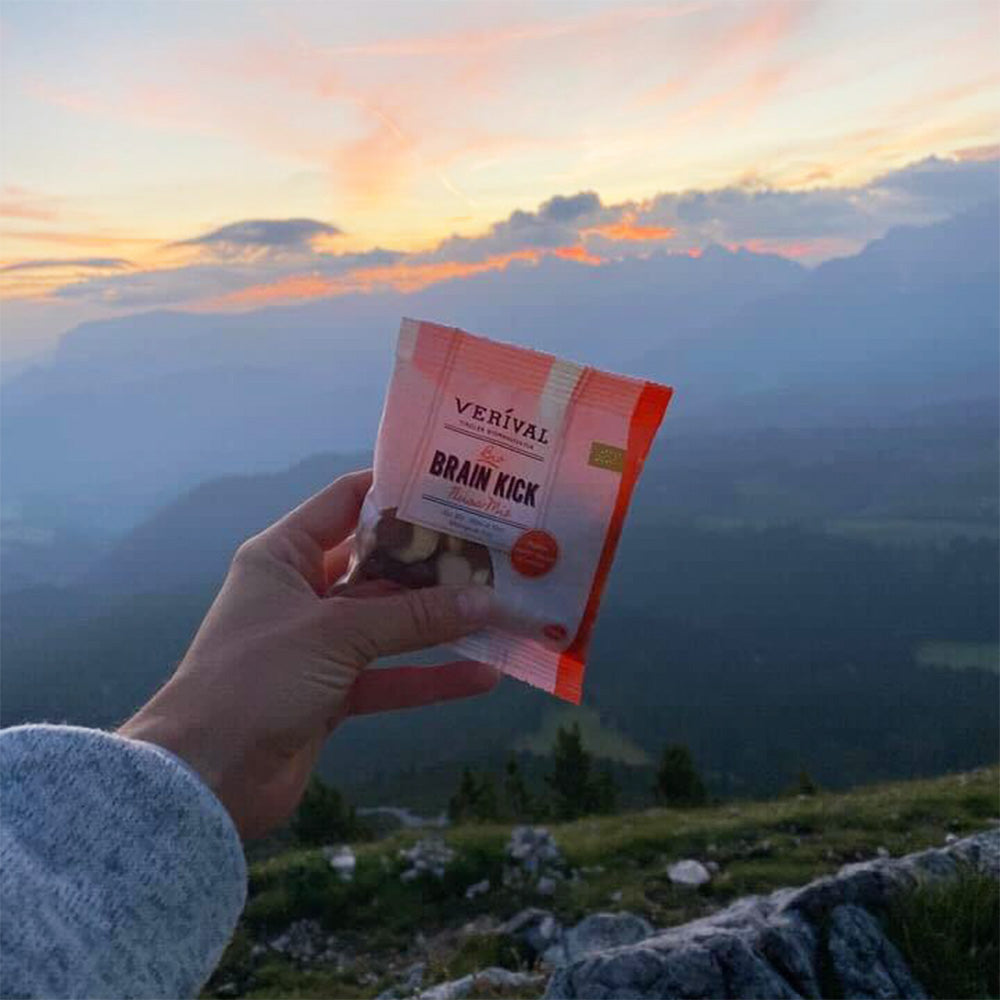It is undisputed that dietary fiber is good for your health. The nutrients found in plant-based foods support healthy digestion and affect our well-being. The German Nutrition Society (DGE) recommends a daily fiber intake of about 30 grams for adults. This blog article will show you how to incorporate this amount into your diet.
High-fiber breakfast from VERIVAL – discover it now!
Before we look at how you can easily consume 30 g of fiber a day, let's take a look at the importance of these nutrients. Dietary fiber is an indigestible component of food that plays an important role in intestinal health. It promotes healthy gut flora and ensures smooth intestinal movement.
It also has an influence on blood sugar levels and ensures a longer-lasting feeling of satiety. You can benefit from these and more health advantages by paying attention to your fiber intake.
High-fiber foods
To meet your daily fiber needs, it is crucial to incorporate high-fiber foods into your diet. Whole grain products such as whole grain bread and whole grain pasta are excellent sources of fiber. They not only provide the desired amount of nutrients, but also long-lasting energy.
Oats are particularly high in fiber, and you can consume them daily in the form of oat flakes in your breakfast dishes. Legumes such as beans, lentils and chickpeas are also high in fiber and offer a protein-rich alternative to meat.
Fruits and vegetables should also be on your menu. Apples, pears, berries, broccoli, carrots and spinach are just a few examples of fiber-rich fruits and vegetables. Nuts and seeds such as chia seeds, flax seeds and almonds are not only crunchy snacks, but also increase the fiber content of your food.
How can I increase fiber in my daily life?
As a rule, it doesn't take drastic changes to increase the fiber content in your daily diet. It's best to start gradually by incorporating more and more high-fiber foods into your meals.
For example, oats or the high-fiber mueslis and porridges from VERIVAL could form the basis of your breakfast. You can vary the taste in many ways by adding fresh fruit, seeds, nuts or nut butter. The raspberry-blueberry prebiotic porridge is particularly high in fiber.
You can enhance your lunch and dinner, for example, with whole grain products, vegetables and legumes. Nuts, fruit and dried fruit are perennial favorites among high-fiber snacks.
But don't forget to drink enough, because fiber binds water. If you don't drink enough when eating a high-fiber diet, you may not feel the many health benefits of fiber and may instead experience constipation.
Healthy eating with 30 g of fiber per day
A balanced diet goes beyond the mere intake of fiber. Combine high-fiber foods with other important nutrients such as protein, healthy fats and vitamins.
If you meet your fiber needs with whole grains, legumes, vegetables and fruits, you won't have to worry about the other nutrients either. All these foods are rich in healthy ingredients.
For example, start the day with a high-fiber breakfast by preparing a delicious porridge. Pure oats or the wide range of porridges from Verival are suitable as a basis. You can increase the fiber content even further with additional toppings such as fruit or seeds. You will also find high-fiber snacks, such as nuts or dates, in the Verival product range.
High-fiber recipes
You don't have to give up culinary enjoyment to reach the 30 g of fiber a day. Start the day with a high-fiber breakfast of oats, fresh fruit and nuts. Try our recipe for delicious Bircher muesli, for example:
Basic recipe: prebiotic porridge
Ingredients
- 50 g Verival Prebiotic Porridge
- 120 ml hot water or hot milk
- Toppings of your choice, such as raspberries or blueberries.
Preparation
- Put the prebiotic porridge in a bowl.
- Pour the hot milk or hot water over the porridge.
- Leave your porridge to stand for 3 minutes and stir it.
- Ready!
Verival mueslis, porridges and granolas also provide you with a lot of fiber to start the day with a nutritional head start. Since tastes differ, you can choose from a variety of flavors, from chocolaty to nutty to fruity.
For lunch, you could opt for a vegetable curry with legumes, while a crunchy salad with nuts and seeds is a fiber-rich option for dinner.
When you get a little peckish in between meals, reach for a homemade granola bar or bake some homemade oat cookies.
Basic recipe: Granola Bars
Our granola bars without industrial sugar are the perfect snack for in between.
Preparation time 15 mins.
Cook time 25 mins.
Total time 40 mins.
Course: Snack
Servings: 15
Ingredients
- 180 g Verival Bircher Porridge
- 80 g nuts of your choice, chopped
- 60 g sweetener, e.g. honey or agave syrup
- 40 g coconut oil
- A little lemon juice
- 1 pinch of cinnamon
- 1 pinch of salt
Preparation
- Preheat the oven to 170°C (convection).
- Line a rectangular baking pan (approx. 32cm x 24cm) with baking paper.
- Mix the porridge, nuts, cinnamon and salt.
- Melt the coconut oil and mix it with the sweetener into the dry ingredients. Add the lemon juice.
- If the mixture does not hold together, you can add a little more oil or sweetener as needed.
- Pour the dough into the prepared baking pan.
- Bake the mixture in the oven for about 25-30 minutes until golden brown.
- Remove the mixture from the oven, cut it into about 15 pieces while still hot, and then let it cool.
Tip
For a long shelf life, store the bars in an airtight container in a cool place.
What are the benefits of fiber for digestion?
Dietary fiber is not only good for intestinal health, but also supports digestion as a whole. By binding water, they increase stool volume, which contributes to regular bowel movements and reduces digestive disorders. This also helps to prevent constipation.
In addition, dietary fiber serves as food for healthy intestinal bacteria, so you can use fiber to build a healthy intestinal flora. An additional advantage is their positive effect on the immune system and improved nutrient absorption.
Dietary fiber for special target groups
Dietary fiber is important for all age groups.
Children and adolescents should consume about 15 grams of fiber per 1000 kcal. The daily requirement for fiber also adjusts depending on the daily calorie requirement.
Since older people tend to suffer from constipation, a high-fiber diet is particularly recommended for them. It is important that they consume enough fluids at the same time and integrate exercise into their daily routine to combat digestive problems.
During pregnancy, fiber can also help to prevent constipation and also supply nutrients to mother and baby.
Fiber and weight management
A high-fiber diet is recommended for anyone trying to lose weight. Fiber ensures a long-lasting feeling of satiety and regulates blood sugar levels. In addition to fiber-rich fruits and vegetables or whole grain products, oats are particularly suitable for losing weight. They swell up in the stomach and thus ensure faster satiation. Due to their high fiber content, this feeling of satiety also lasts a long time.
Possible challenges and solutions
Those who have previously eaten a low-fiber diet should only slowly increase their fiber intake. Otherwise, a high-fiber diet can lead to bloating and abdominal pain. When you integrate new foods into your diet, you should always take allergies and intolerances into account.
In addition, you should pay attention to your fluid intake to avoid constipation.
Cover your fiber needs with a healthy breakfast from VERIVAL.
Conclusion
A high-fiber diet with 30 g per day offers numerous health benefits. From better digestion to increased satiety to weight management support, fiber is essential for health and well-being. Try to gradually increase the fiber content in your diet and incorporate more and more high-fiber foods.
Frequently asked questions
How can I track my fiber intake?
To keep track of your fiber intake, you can use nutrition apps or check the fiber content on food packaging. This way, you can ensure that you meet your daily fiber requirement.
Can you eat too much fiber?
While fiber is important for health, you don't want to overdo it. Excessive consumption can lead to bloating or digestive discomfort. According to the German Nutrition Society (DGE), an adult should consume about 30 grams of fiber per day.
Which fibers are suitable for a gluten-free diet?
For a gluten-free diet, sources of fiber such as oats are a good choice. Look for certified gluten-free oats to ensure that they are free of contaminants.
Are fiber supplements useful?
Fiber supplements can be useful if it is difficult to get enough fiber from your regular diet. Ideally, however, you should favor foods that are high in fiber, as they also provide vitamins, minerals and other nutrients. You should always consult a doctor before taking supplements.
